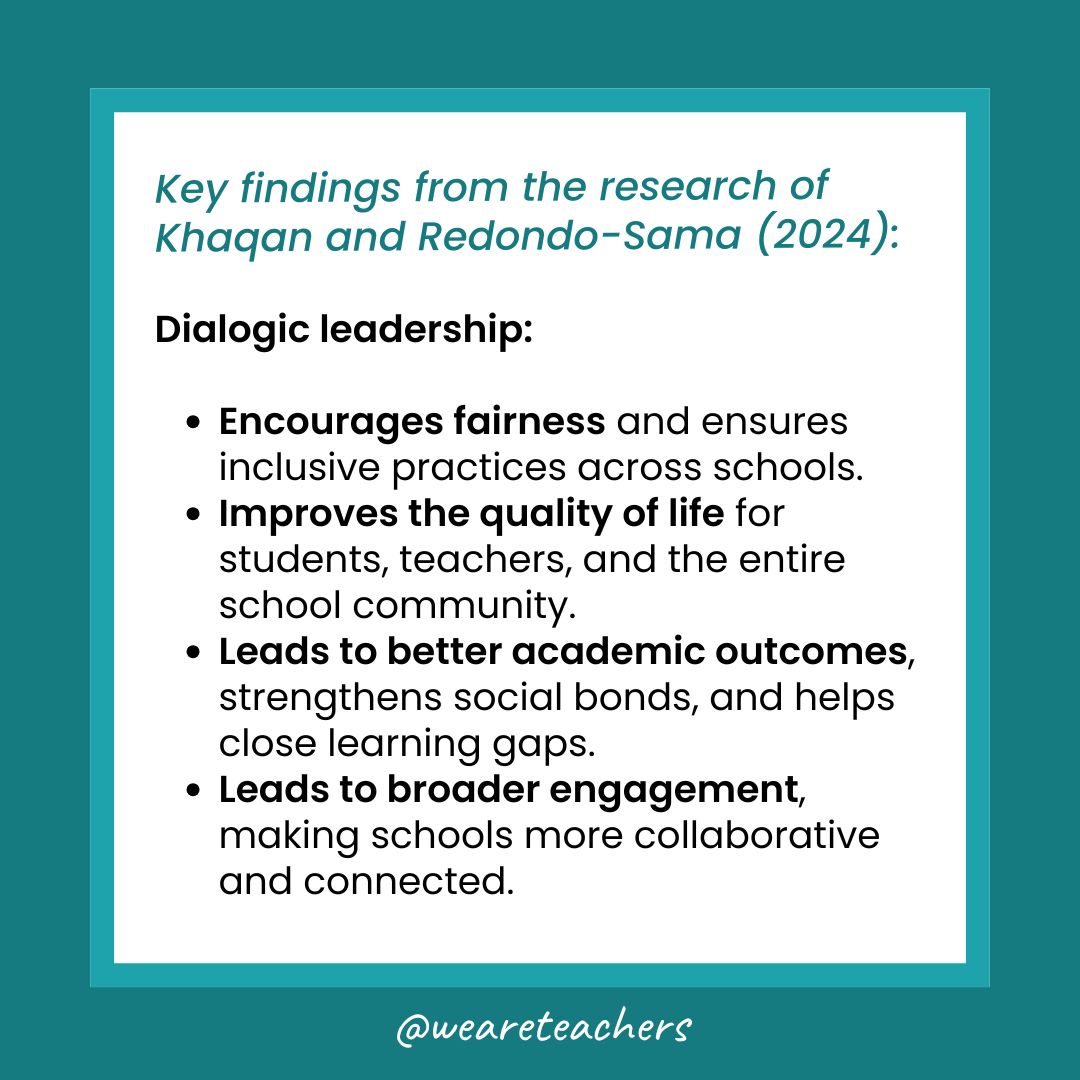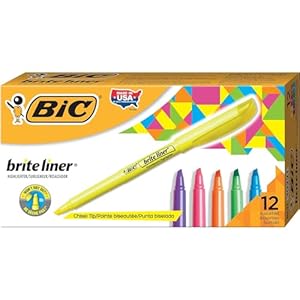Nobody likes being talked at—folks want to really feel like they’re a part of the dialog. After I suppose again to my days educating eighth graders, I keep in mind how arduous it was to create an area the place actual dialogue occurred relatively than simply “sit down and hear” moments. I wished my college students to really feel heard and valued, one thing that doesn’t at all times occur in school rooms—or in workplaces, for that matter. A new study confirms what all of us form of already know: Management isn’t about barking orders. It’s about connecting, speaking with folks, and creating significant change by way of interplay.
What’s dialogic management?
This research by Shiza Khaqan and Gisela Redondo-Sama highlights the facility of dialogic management (DL) to boost inclusivity in colleges and improve scholar studying. It’s all about leaders participating in open conversations and collaborative decision-making, as an alternative of handing down choices from on excessive. Dialogic management focuses on equality, inclusion, and dealing as a group to make choices collectively. Right here’s what units dialogic management other than different strategies of management:
- Open communication: Principals and lecturers brazenly share concepts, making a back-and-forth dialogue that drives actual progress.
- Collaborative decision-making: Everybody will get a say, making the method extra inclusive and the outcomes stronger.
- Deal with equality: DL emphasizes equity and social justice, guaranteeing each voice issues.
- Group and inclusion: It’s about constructing a faculty surroundings the place everybody feels they belong.
What are some examples of dialogic management?
Dialogic management goes past the standard command-and-control fashions by specializing in collaborative decision-making. Right here’s what it appears to be like like in follow:
For college leaders
Moderately than conventional top-down management, college leaders participating in dialogic management recurrently search out suggestions and collaboration with stakeholders.
- Internet hosting common open boards: Create structured occasions when lecturers, employees, and even college students can specific their views on college insurance policies and initiatives. For instance, month-to-month roundtable discussions could possibly be a spot the place individuals really feel protected talking freely and contributing concepts.
- Involving stakeholders in decision-making: Earlier than implementing new insurance policies or adjustments, collect enter from a broad vary of stakeholders, together with lecturers, non-teaching employees, college students, and fogeys. Use instruments like surveys or digital platforms the place group members can submit and upvote recommendations.
- Clear communication: Frequently replace the varsity group about ongoing tasks and choices. Use newsletters, college assemblies, and social media to share the explanations behind choices and the anticipated outcomes.
- Empowerment by way of committees: Arrange committees for various features of faculty administration (e.g., curriculum improvement, extracurricular actions, and wellness packages) that embrace members from totally different elements of the varsity group. Give these committees actual authority to make choices and affect college coverage.
For lecturers
Much like college leaders, lecturers engaged in dialogic management see classroom communication and group as a two-way road.
- Classroom city halls: Dedicate time every week for college students to debate class guidelines, upcoming actions, and any issues they could have. This follow not solely encourages college students to specific their opinions but in addition teaches them the way to have interaction in respectful dialogue and democratic decision-making.
- Collaborative classroom administration: Develop classroom norms and guidelines together with your college students relatively than imposing them. Have college students work collectively to provide you with pointers that everybody agrees on, selling a way of possession and accountability.
- Peer suggestions periods: Implement common periods the place college students can provide suggestions on one another’s work in a structured and supportive surroundings. Information them on the way to present constructive criticism and acknowledge the efforts of their friends.
- Scholar-led conferences: Encourage college students to steer parent-teacher conferences. Have them put together displays about their studying, targets, and achievements. This empowers college students and shifts the standard energy dynamic in parent-teacher interactions.
Key findings from Khaqan and Redondo-Sama (2024):
This analysis discovered that dialogic management (DL) presents many constructive advantages to varsities.
- Rooted in equality and social justice: DL encourages equity and ensures inclusive practices throughout colleges.
- Twin-level impression: DL has demonstrated constructive results each at particular person and institutional ranges:
- For people: Boosts confidence, helps well-being, and improves the standard of life for college students, lecturers, and all the college group.
- For colleges: Results in higher educational outcomes, strengthens social bonds, and helps shut studying gaps.
- Broader engagement: DL pulls in everybody—dad and mom, employees, and college students—to make colleges extra collaborative and related.

Can we belief this analysis?
Not all analysis holds the identical worth! Right here’s what our We Are Academics “Malarkey Meter” says in the case of this publication, based mostly on 4 key elements.
- Peer-reviewed? Sure, this research was scrutinized and authorised by way of a rigorous peer evaluation course of.
- Pattern measurement: The systematic evaluation (much like a meta-analysis, gathering findings from many research and synthesizing these findings) analyzed 27 research, offering sufficient datasets to assist their conclusions.
- Reliable sources: The 2 researchers (Shiza Khaqan and Gisela Redondo-Sama) are considerably inexperienced to academia however properly regarded, they usually comprise over 2,000 citations. The research was additionally revealed within the respected and broadly recognized Educational Research Review.
- Methodology: The researchers utilized the PRISMA mannequin, guaranteeing a scientific and complete evaluation of current research, and gathered different research’ leads to probably the most rigorous method doable. Nice job, girls!
What does this imply for lecturers?
Whereas we might not all be principals, we’re all nonetheless leaders of our personal school rooms. Right here’s how we may apply the outcomes of this analysis:
- Advocate for DL practices. Use this analysis to encourage your college or district to undertake dialogic management. Discuss the way it improves lecturers and builds stronger communities—it’s a simple promote!
- Interact with the group. Deliver dad and mom and group members into the dialog. Their views can enrich your college surroundings and make it extra inclusive for everybody.
- Replicate in your management model. Take into consideration the way you work together with college students and colleagues. Are you fostering dialogue and collaboration? My former principal used to go to informally with all his lecturers earlier than massive choices have been made for our college. Small adjustments could make an enormous distinction in making a constructive, inclusive ambiance.
Dialogic management may sound like a buzzword, however it’s actually about making colleges higher for everybody. By specializing in conversations as an alternative of instructions, we are able to create stronger, extra inclusive academic areas the place each voice issues. Let’s decide to shaping futures the place we hear each voice. Let’s dialogue, not dictate!
Searching for extra articles like this? Make sure to subscribe to our newsletters!
Trending Merchandise










